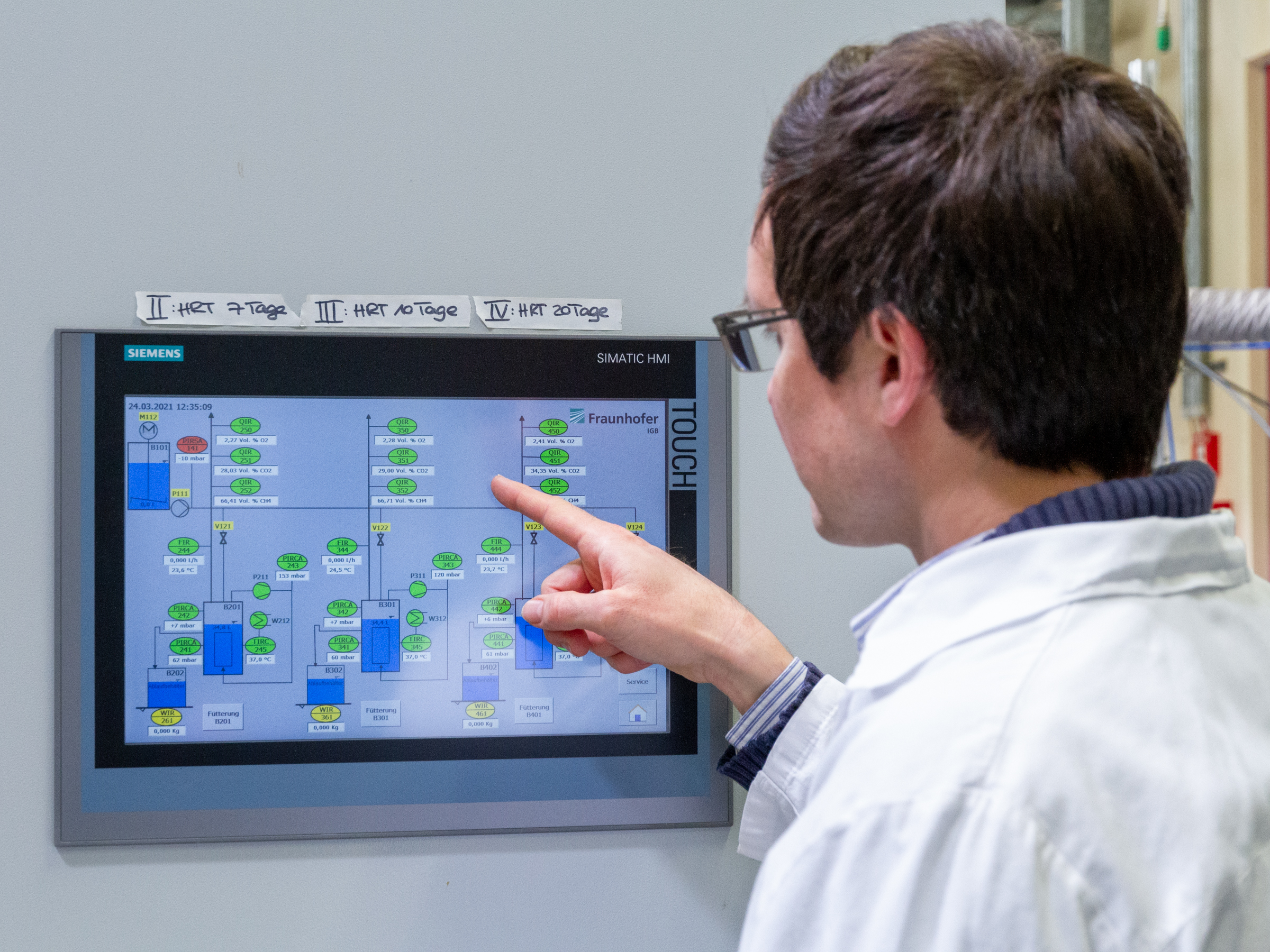As in many other areas of life, digital applications become increasingly important within the water industry. Modern sensors, complex modeling, artificial intelligence or digital twins offer incredible application potential for resource management, the monitoring of water flows and qualities or even in the optimization of technical plants and processes for water treatment.
Water 4.0 – The digitization of the water industry
Sensor-based process control for application-oriented water treatment
At Fraunhofer IGB, we are working in an increasing number of projects on the development and integration of digital applications in environmental engineering applications. One main focus is on establishing efficient data and communication infrastructures to enable effective communication of sensor-based system components and smart process control. Here, we bring in our longstanding experience and expertise in automation technology for environmental engineering plants.
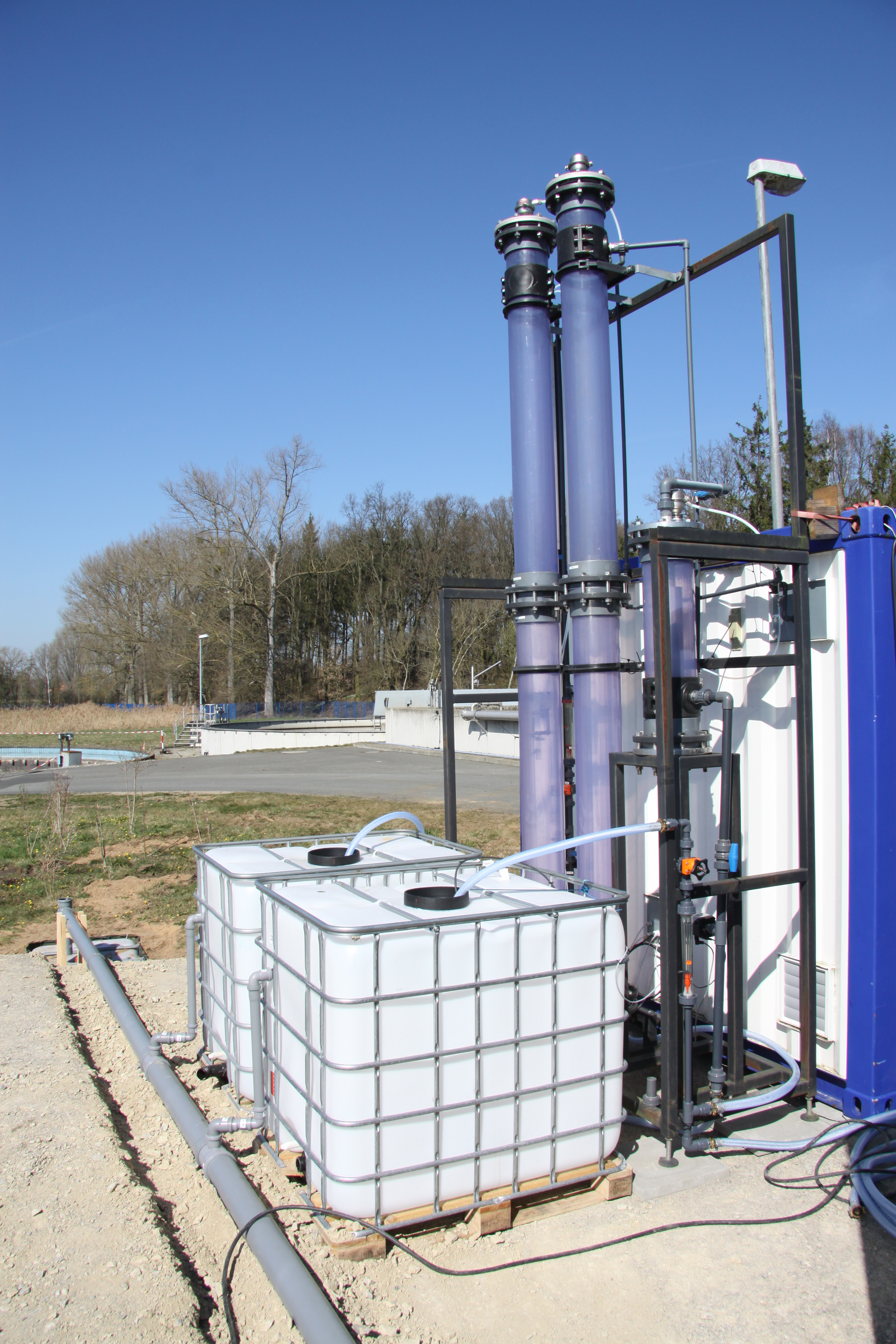
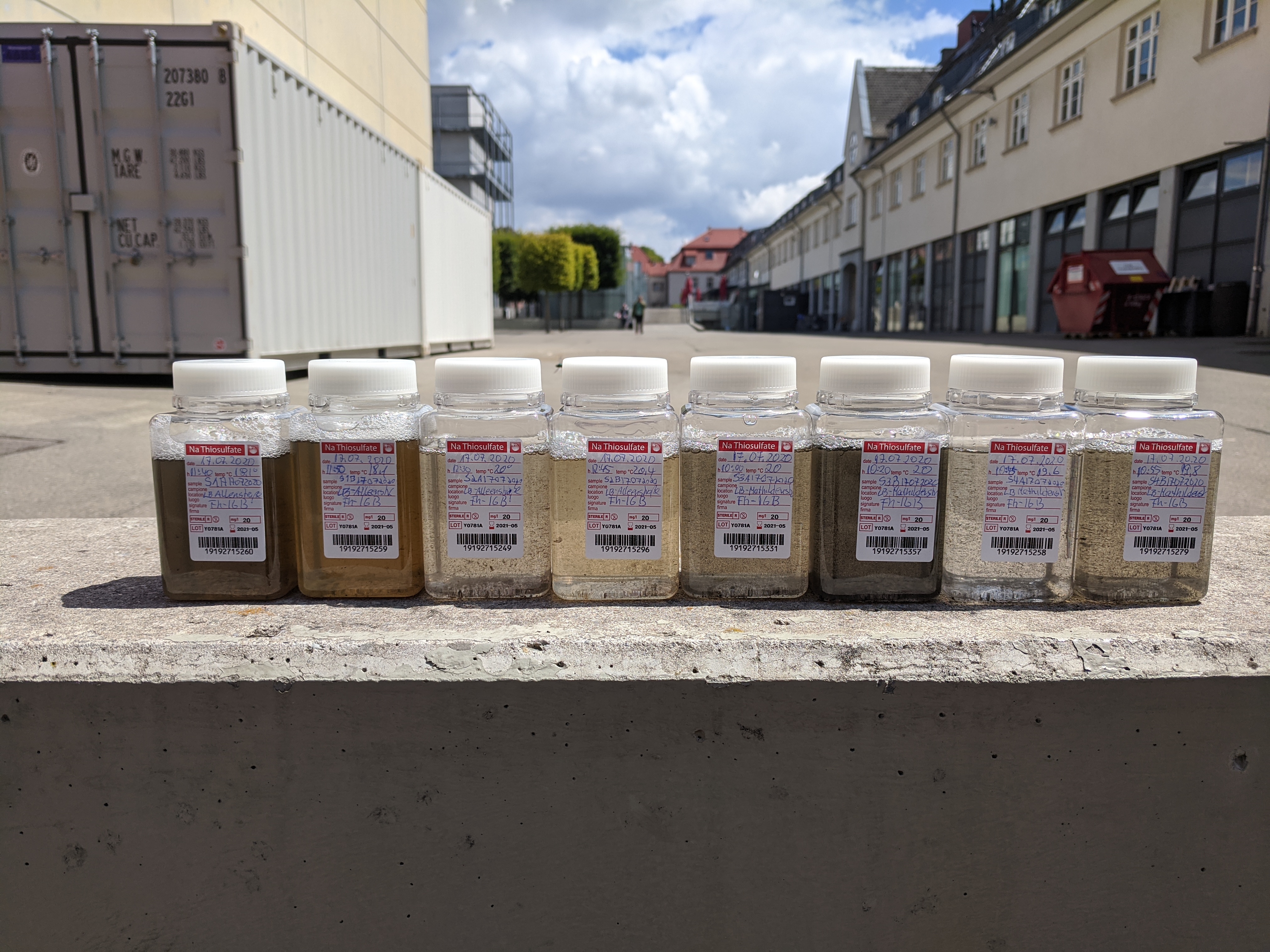
System architecture for AI-optimized process control
In the "Hypowave+" project funded by the German Federal Ministry of Education and Research (BMBF), we are working together with research and industry partners from agriculture and water management on safe water reuse in a hydroponic greenhouse. As IGB, we are coordinating the work on digitization with the objective of integrating the numerous process, plant and sensor data into an overall process control system. With our work, we enable the effective communication of the environmental technology systems and develop an overarching control system for the entire treatment and reuse scheme. This communication then enables our partners to perform analyses using artificial neural networks (KNN), the results of which serve to automatically optimize the overall control system and thus all system components along the process chain. In this way, optimized solutions for the sometimes competing objectives – nutrient elimination in wastewater treatment and nutrient supply in plant cultivation – are identified. The derived measures, for example an extended aeration time, are communicated back to the corresponding components and trigger the respective process adaptation as needed.
In addition, we are investigating the potential of digitization for hygiene risk management in water reuse, for example with regard to pathogens and how the results of microbial investigations in the laboratory, e.g. for the detection of viruses and bacteria, can be linked to sensor-based monitoring in order to ensure adequate hygiene in an efficient manner.
Data-supported control of blue-green infrastructures
The communication and data-based optimization of water management components is also the subject of our activities in the BMBF project "Leipziger BlauGrün". At the campus of the Helmholtz Centre for Environmental Research in Leipzig, we are working on automated control of rainwater runoff from green roofs. The pilot green roof is installed on a carport at the campus and is used for rainwater collection and retention. The substrates within this green roof are monitored for moisture, conductivity and temperature by sensors. In addition, the fill level of the connected cistern is continuously measured. The higher-level data collection system also interfaces with a weather station. If a heavier rain event is predicted, the green roof and cistern can be drained in a controlled manner to create controlled runoff and make room for further rain retention. At the IGB, we are involved in developing the infrastructure for data collection and communication. A key challenge here is the harmonization of different communication formats and the integration of existing system components with newly implemented elements. Here, the expertise of the IGB in process automation and in handling measurement data can be transferred to the level of the urban neighborhood.
Modeling for use of alternative water resources
Besides green and blue infrastructure, grey infrastructure elements, such as roads account for the largest part of urban spaces. In the BMBF project "Straße der Zukunft" (Streets of the Future), we are investigating sustainable concepts for more resource efficiency in the streetscape. To investigate whether and under what circumstances rainwater collection on streets can be suitable for purposes such as irrigation, we are using air quality sensors and analyzing possible correlations with water quality parameters of street runoff. As part of the project, a rainwater cistern with a capacity of 50 cubic meters was also installed in Ludwigsburg's Dragonergässle in the immediate vicinity of several school buildings. The cistern is continuously monitored digitally for its filling level. Due to the high level of pollution in the street runoff, the collected rainwater is primarily used for sewer flushing. With the help of laboratory investigations of rainwater and street runoff quality as well as air quality sensors, scientific research is being conducted to determine the extent to which predictions can be made about the water quality of surface runoff. These could then serve to promote a broader use of collected rainwater, such as the irrigation of green spaces, and thus contribute to greater resource efficiency in streetscapes and neighborhoods.
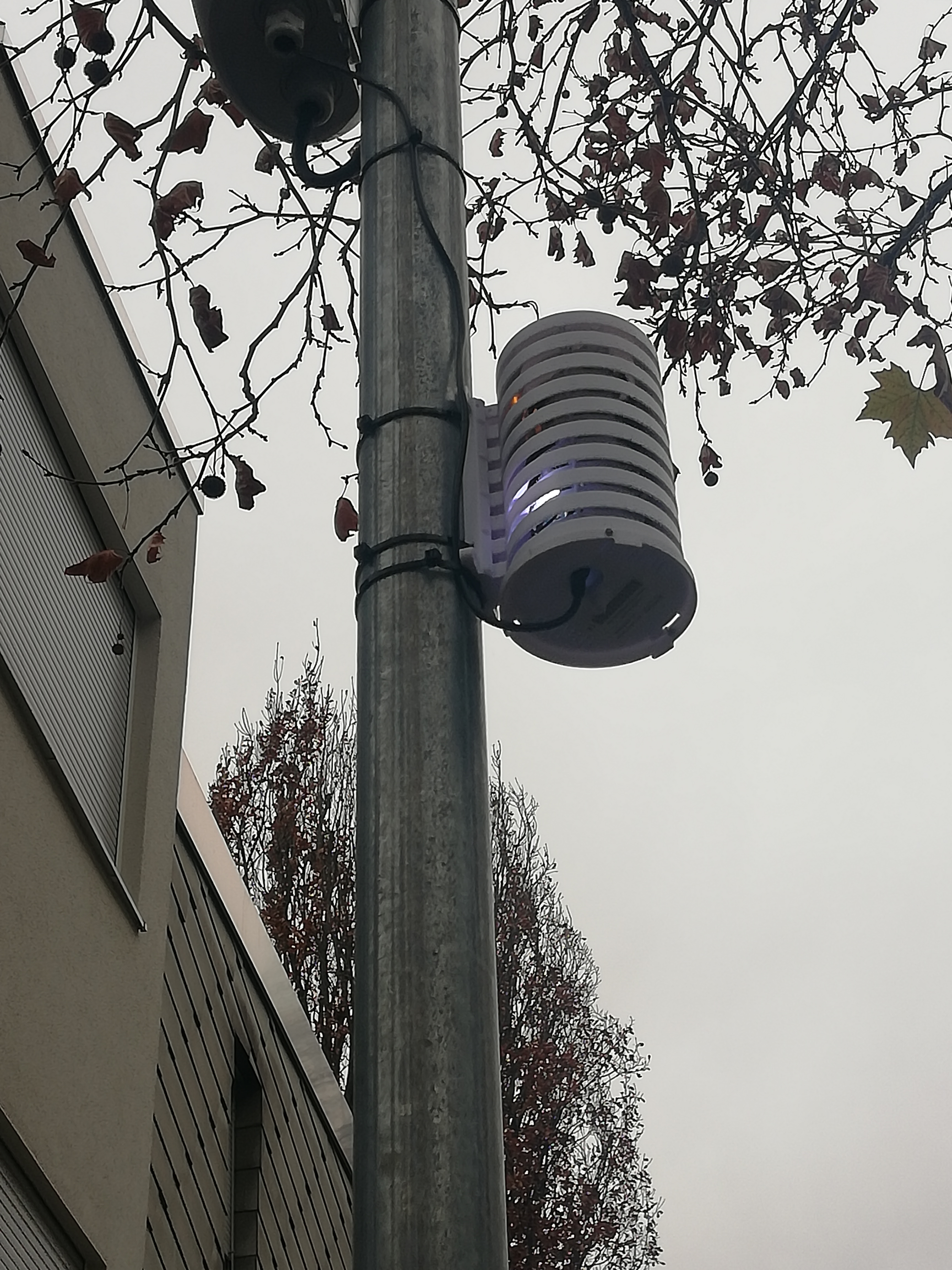
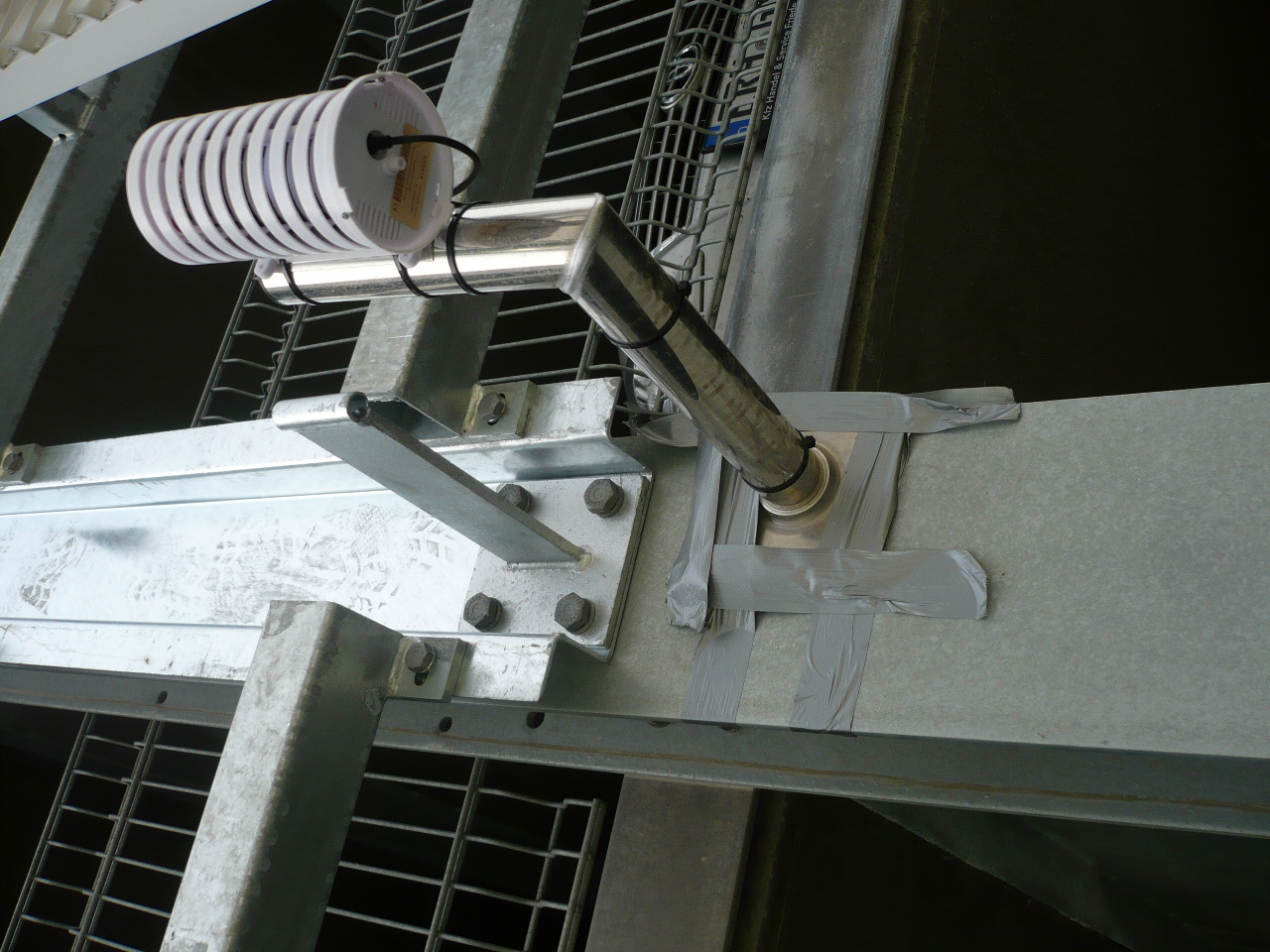
Driving digitization together with partners
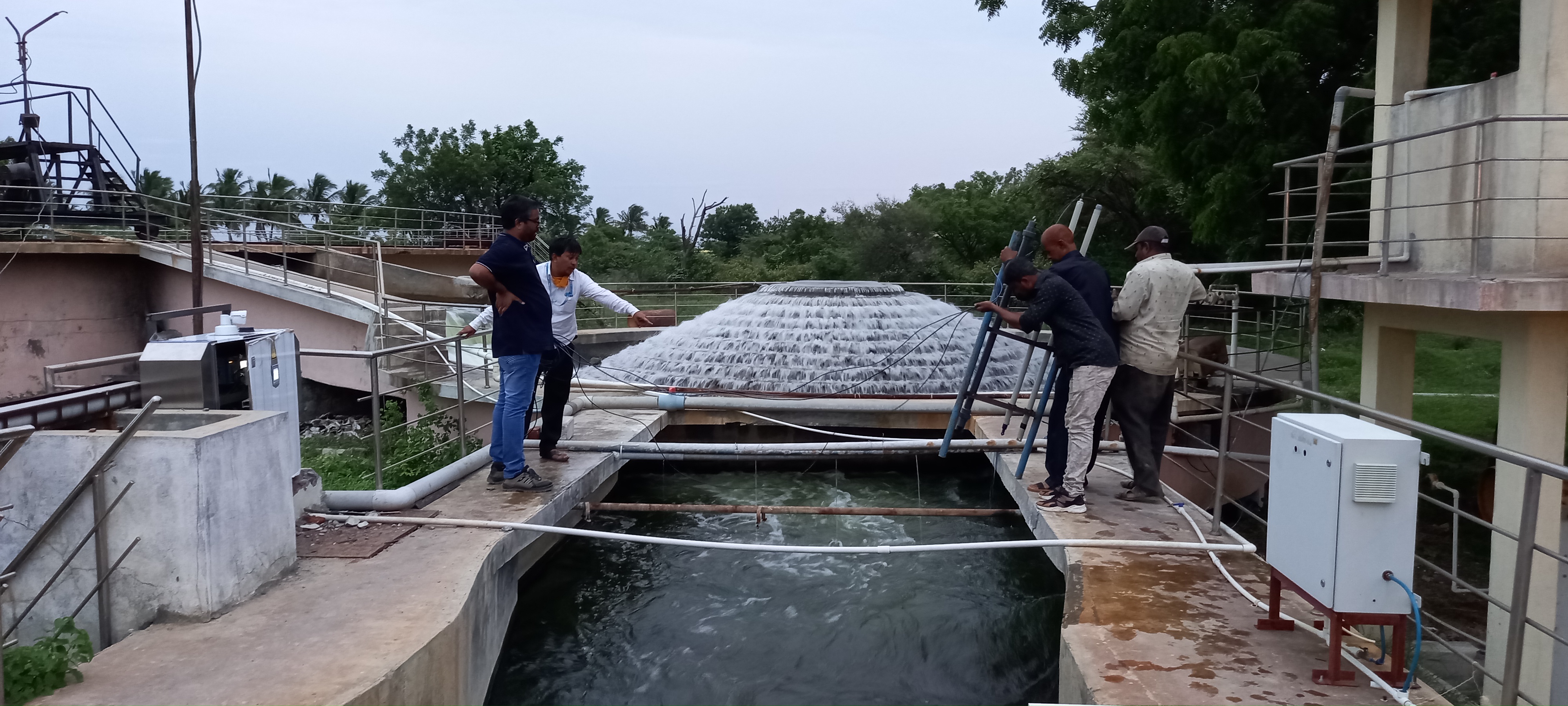
In addition, there are many opportunities for cooperation with companies and municipalities in Germany and abroad.
For example, as part of the "Smart Water Monitoring Solapur" project funded by the Landesagentur Umwelttechnik BW, we are working with the measurement technology providers Jumo GmbH and Nivus GmbH, our partners in the German Water Partnership network, to implement a digital monitoring system at a drinking water plant in Solapur, India. Increased data availability will enable operators to identify faults more easily and optimize their operations.
Sustainability goals are crucial for tomorrow's cities, but additional dimensions such as resilience or adaptability to increasing extreme situations and changing framework conditions require new approaches, strategies and infrastructures. Together with partners from administration, industry and research in the Fraunhofer Morgenstadt network, we are driving digitalization for sustainable water management.
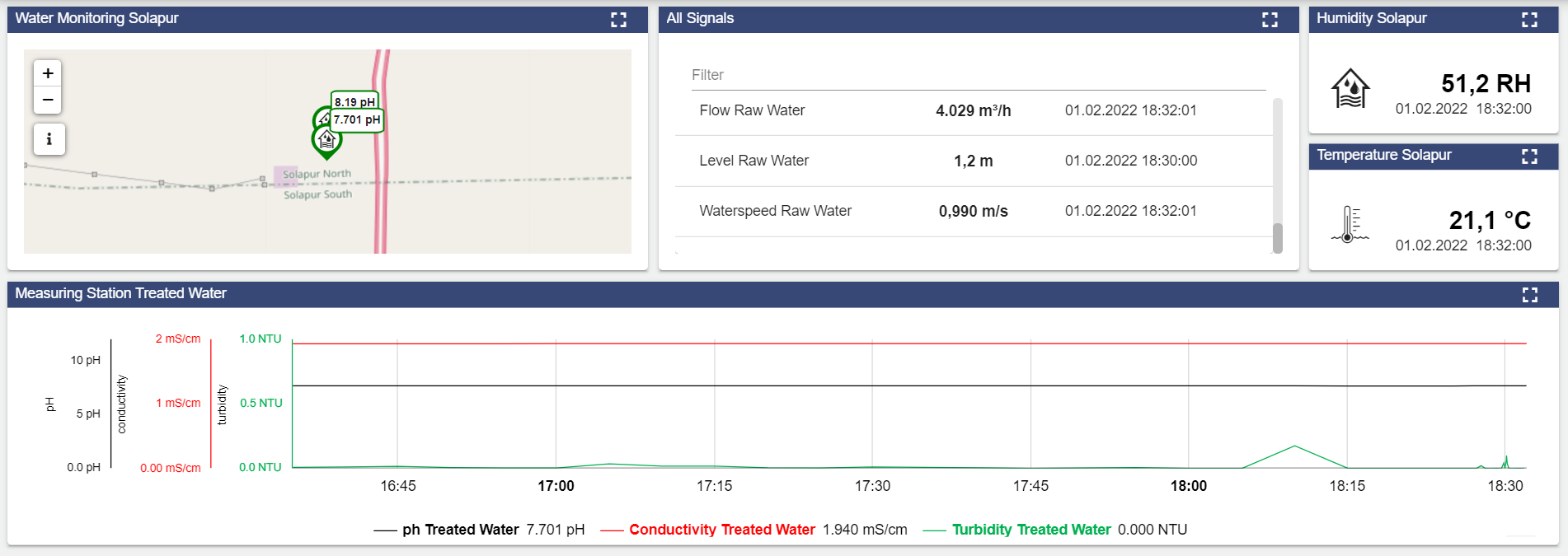
 Fraunhofer Institute for Interfacial Engineering and Biotechnology IGB
Fraunhofer Institute for Interfacial Engineering and Biotechnology IGB